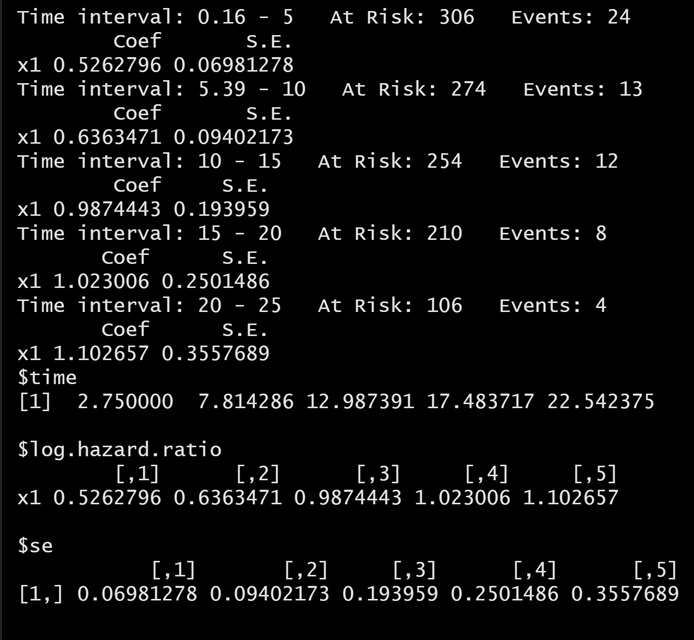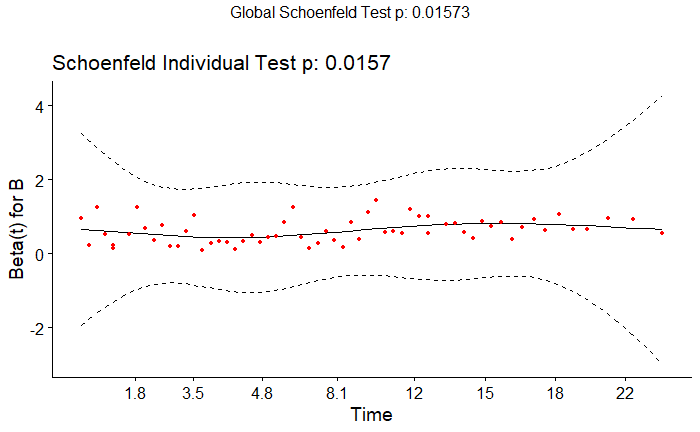I have a question related to time specific hazard and time dependent incident dynamic ROC analysis.
I am currently working on some analysis where I evaluate a prognostic model (Cox model) on some survival data.
The plots I show here are based on the models prognostic index. Firstly the model yields significant p-value in the Schoenfeld test of residuals. So my interpretation was that it does not satisfy the assupmtion of proportional hazard. I also plotted the log Hazard for different time periods, using Harrels RMS-package, and to my surprise, the log Hazard did vary but it seemed to increase with time, which is quite counter-intuitive as I would expect the Hazard to decrease over time for a marker or a linear prognostic model.
I also performed a incident dynamic time dependent ROC analysis using the RisksetROC-package. Here the AUC decreased over time when using the Cox estimator-method. It was more flat when performed with a Schoenfeld estimator-method, but the i-AUC-metric (integral under the curve for the whole time period) was lower when compared to the Cox-estimator-method.
My understanding is that the time specific hazard ratio reflects the relation between the individuals in the sample at risk based on the prognostic index in a manner that is similar to how the I/D ROC-analysis discriminates between cases and controls in the methods used in the RisksetROC-package. (" sensitivity measures the expected fraction of subjects with a marker greater than c among the subpopulation of individuals who die at time t, while specificity measures the fraction of subjects with a marker less than or equal to c among those who survive beyond time t." According to Heagerty and Zheng in "Survival Model Predictive Accuracy and ROC Curves" from 2005 where they describe the methods which "RisksetROC" are based on.
These findings are somewhat confusing to me:
- I was surprised to see that the log-Hazard increased over time.
- The time specific I/D-ROC AUC decreased over time (With the Cox-estimator), which I would expect to more or less follow the trends in the hazard ratio. What am i missing? Are these findings to be expected?
There are limited number of events at later stages, could this be an explanation?





